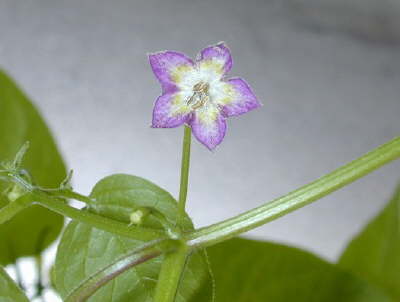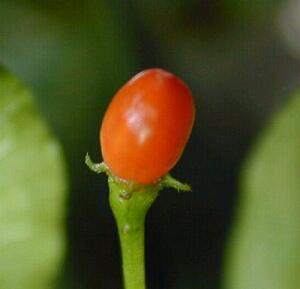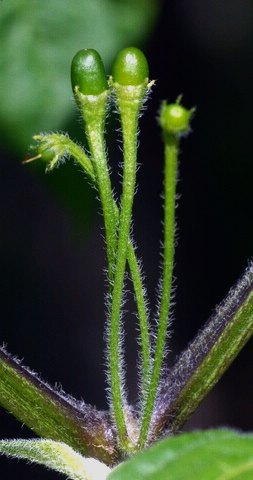C. praetermissum
This is a very common wild species in Brazil. It grows by itself in the wild, but because of it’s unique flavor is also widely grown commercially in farms.

This species is generally referred to as “Cumarí” in Brazil. This word comes
from the Tupi language (spoken by a brazilian indian tribe) and means chile
pepper.

It grows spontaneously inn some areas, especially in the “cerrado” region of
Brazil. In the cerrado, most of the vegetation has deciduous leaves, which
are shed during the dry season to be replaced when the wet season starts
again. During the wet season, an abundance of cumari plants start to sprout,
mostly in semi-sheltered areas, like the borders of woods, around fences or
any other area which receives a reasonable amount of sun, but are sheltered
enough not to scald the plants.

It can be considered a semi-domesticaded species, since it occurs in the wild
but is also produced in a larger scale in farms, for commercial use. The
range of different varieties that belong to this species is rather big, with
some being more domesticaded and selected than others.
As shown in the two pod pictures above, some varieties are very pubescent while others have no hair and rather waxy leaves and stems.
This species belong to the C. baccatum group of plants and is consider one variety of it by some researchers (C. baccatum var. praetermissum).

One of the most distinguishing characteristics of this species is its flowers, which have a white corolla with yellow or green spots and a large purple boards around the petals. In some rare cases, the corolla is almost totally white, with just a slight hint of purple (as shown in the picture above). The spots are also sometimes very faint or even, in some rare cases, absent (as in the picture below).

The fruits are usually red (rarely orange or yellow), oblong, erect and, in most cases, deciduous. Some varieties have been selected in order to have less deciduous fruits and are usually the varieties which are cultivated commercially.
